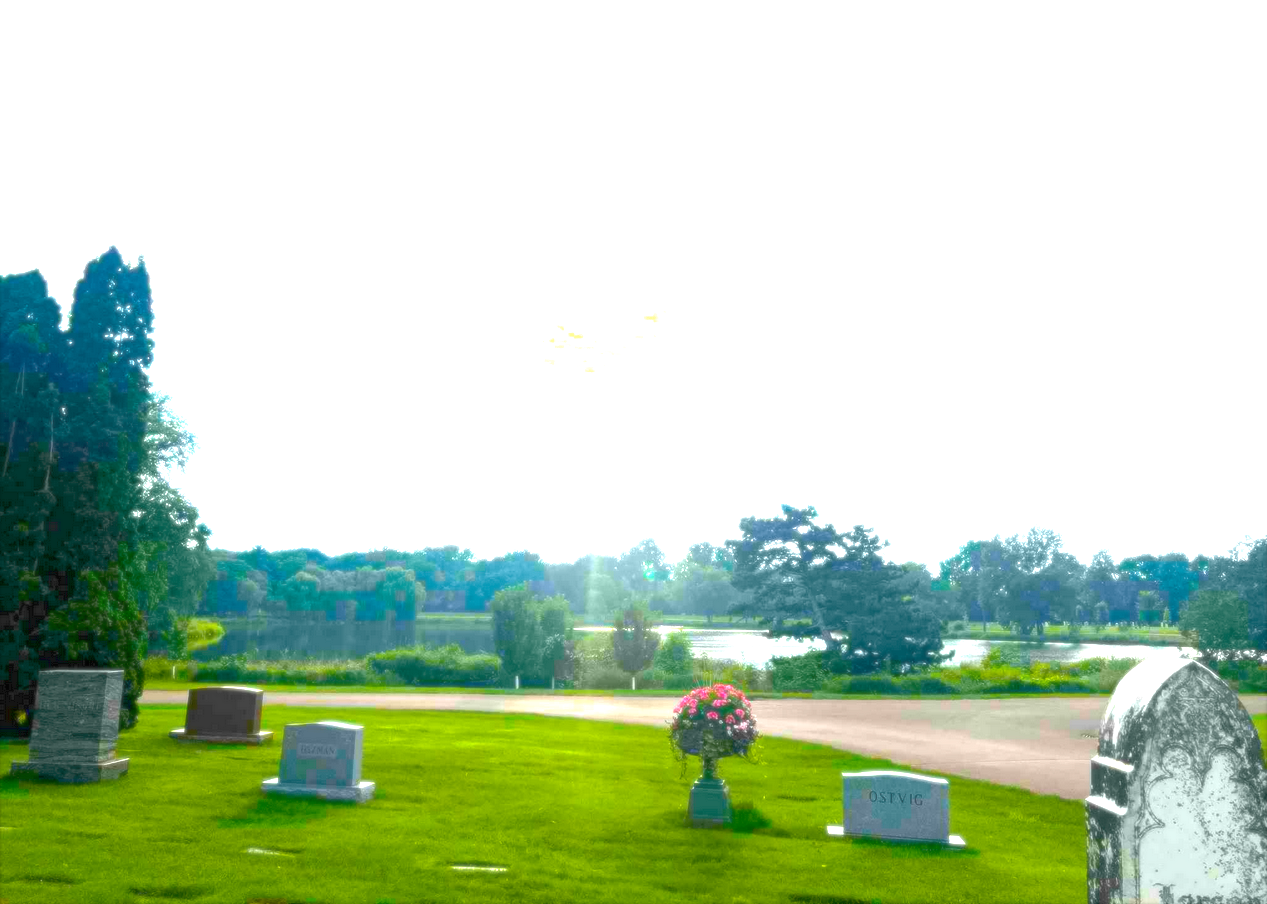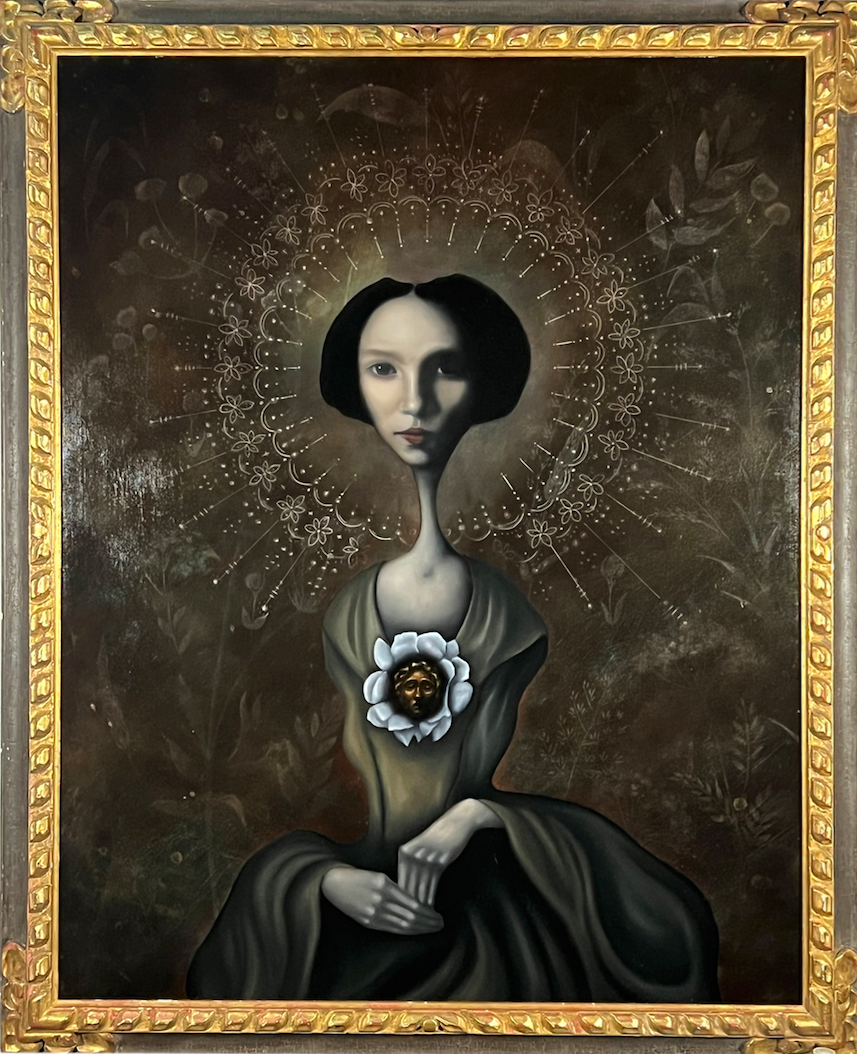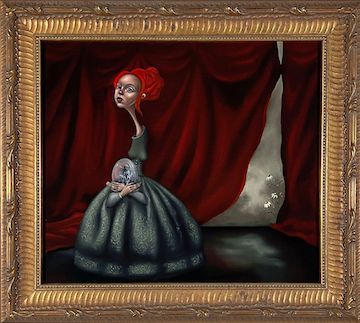Dining Among the Quiet
Nicholas Harper • August 12, 2025
My Weekly Lunch Date with the Dead

It all began about seven years ago. My trusty, weekly afternoon ritual of dining on the go was in a bit of a crisis.
My favorite parking spot, once a haven with a magnificent view of the Minneapolis skyline, had slowly but surely succumbed to nature's relentless creep. Trees and foliage, like an incredibly slow-motion documentary, had gradually devoured the once-stunning panorama.
And it wasn't just nature. The parking lot, despite its generous number of spaces, had become a hot commodity. What was once a quiet escape for me was now a bustling hub for countless others. Finding a decent spot, especially one that still offered a fleeting glimpse of the city, had become a premium. Not to mention, it brought out one of my biggest pet peeves.
When I settle in for the occasional meal in my car, I crave the simple pleasure of having the windows down, letting the glorious summer breeze waft through. Summer in Minneapolis is, after all, a precious, fleeting gift, and basking in that warm air, even when it's 90 degrees, feels like an absolute luxury we should savor and not take for granted.
So there I'd sit, windows down, trying to soak in the last vestiges of the skyline before nature claimed it entirely. And then, the parade of pet peeves would arrive: cars pulling in, presumably for the same reason as I, but with their windows sealed shut, AC on high, and subsequently, the motor, often loud and obtrusive, running. So much for my quiet moment of solitude. And don't even get me started on the music that inevitably bled through their glass cocoons.
I'd often find myself wondering, "where I might be able to go to enjoy some peace and quiet, yet still enjoy the beauty of nature juxtaposed with an urban skyline backdrop?” I desperately needed to ditch these intruders. These folks were clearly not my tribe, seemingly dependent on artificially controlled climates, constantly distracted by music and news radio and unable to tolerate their own thoughts for a single second. (A bit snarky? Maybe! It’s just that that constant buzz of car motors can really get under one’s skin...😉)
Gated Community
Then, it hit me! A brilliant idea sparked. I knew of a potentially perfect spot, though I wasn't sure if it would work or if it was even "allowed." But why wouldn't it be? Even if the view wasn't exactly the same, of course I could go; it was open to the public, and it was oh so close. And so, on my last visit to the old parking lot, even before unwrapping my wrap, I turned the car back on, backed out, and said goodbye to the lineup of idling cars. Each was a little micro-environment that had spilled out and, like the shrubbery and trees, slowly overran what once was a perfectly great location to enjoy some peace and quiet, nature, and even the urban city, albeit from a distance.
Not that long after, I found myself entering a gated community. No guards, but a gate nonetheless, with rules and specific open hours. Noted. Instinctively, I turned right and drove respectfully, slowly, up a long hill. At the summit, the road curved right, then offered an option to the left. I turned, and there it was—an expansive and incredible view of the city!
Even better, there was a large tree off to the side of the one-lane road—perfect for shade on hot days and for cutting the sun's glare, allowing me to fully appreciate the vast, green hill cascading before me.
I pulled under the tree, turned off the engine, and... I listened. Moments stretched into long, silent seconds. Nothing. Silence. Beautiful, majestic silence. Except, of course, for a few birds, the rustling of leaves in the surrounding trees, and an occasional plane overhead. But other than that, pure, unadulterated quiet. And the breeze! It swept up over the hill, strong and constant. You could say, I was in heaven.
My Tribe
But truth be told, I wasn't alone. Far from it. I was, in fact, in the midst of a great throng of people—people of every race, color, age, and gender. There had to be at least a few thousand within throwing distance alone. And they, too, were settled into their own private micro-climates, but car engines, talk radio, and teeth-rattling bass weren't going to emanate from their abodes anytime soon. I was, of course, in the middle of a cemetery. And where the living were concerned, I was absolutely alone. Blissfully so. And the ones underground? Well, let's just say I had found my tribe.
I bring this up because the Twin Cities Death Cafe, normally hosted at the Rogue Buddha Gallery on the last Sunday of every month, recently forayed outside of the gallery walls and into a local cemetery a couple Sundays ago. The cemetery walks have become one of my favorite Death Cafe rituals, which take place every summer. As per usual, we met at a designated spot and then dispersed, roaming the grounds either with others or on our lonesome, only to reconvene an hour later to share our thoughts, experiences, and observations for an hour before taking our leave. For me, this is the perfect way to celebrate life, death, community, and summer. And we couldn’t have asked for a better location than Lakewood cemetery in South Minneapolis for that days romp.
The Wisdom of Quiet Places
And so nearly every week I bring a lunch to this particular spot and enjoy a meal under the tree, watching nature and the city move slowly into the future. I’m reminded by my location that the future isn’t a promise; it’s an expectation. And that, as demonstrated by my old location, even the view can’t be depended on forever. Everything has a shelf life, everything, a “must consume by” date.
Where those tall skyscrapers now stand, off in the distance, there once was a building of smaller stature on that plot, and before that building, something else and someone else called it home. And before them, maybe just pure untamed woods and fields visited only by animals and insects. And maybe that’s where it will eventually end up once again, that is, before the next iteration of, well, who knows what, moves in.
As I sit in my car, windows down on these beautifully precious summer days, I'm reminded that we only have so many summers left in each of our lives. I hope to enjoy at least another 50 or so myself. (Optimistic much? You better believe it!) So, it's best to take full advantage of them while they're here, not push them away with air conditioning so me thinks. Hmm, there's a weird metaphor in there somewhere—air conditioning metaphorically being a mechanism to push away thoughts of our mortality, our eventual demise. I'll have to work on that one!
We also only have so much time to think and be with our thoughts, to figure out who we really are or who we want to become. So why push that away with overly constructed pop tunes or equally manufactured news shows? No. For me, silence is truly bliss. This approach has even seeped into my ritual at the easel, but that’s for another time perhaps.
In the End, Live!
I should admit, I'm not at this spot every week. No, I've taken to visiting other abodes of the afterlife for my weekly meal. Most don't have a city view, but what they do offer is just as interesting and beautiful. And all of them, large or small, manicured or dilapidated, each and every one offers a glimpse into the future, a prediction with 100% accuracy. Each whispers the words... "This is your future, so take advantage of your present while you can. Every moment you're not dead, live! To whatever extent and in whatever way you can, find a way, no matter how small, to be alive and live!"
And so it is that I sit for a few moments each week in various cemeteries, sharing a meal with my tribe, sharing time in their home, and enjoying a little slice of Heaven on Earth while I still can.
(To learn more about the Twin Cities Death Cafe at the Rogue Buddha Gallery, CLICK HERE.)
TRADE SECRET

What Comes First? Ah, the age-old question: What came first, the title or the painting? For every artist and every piece of art, I'm sure the answer is different. For me, it changes almost every time too, unless I'm working on a series like my "Nocturnes"—a collection of ambient and minimal landscapes. When I approach a blank canvas, one of two things is usually true. Either I have a crystal-clear idea of what I'm painting, down to the meaning of every element, or I just go with the flow, letting the forces of inspiration do the heavy lifting. The muses never explicitly share their thoughts, so sometimes I'm left to wonder about a painting's meaning myself. Of course, the truth is never so black and white; each painting is a combination of these two scenarios. No matter how well-defined an image is in my mind, once I'm at the easel, the painting takes on a life of its own, and those pesky forces have their fun if they feel the need. I'm reminded of the quote by Salvador Dalí: "If you understand your painting beforehand, you might as well not paint it." And while I see the merit in this, I also enjoy having a bit of a roadmap, especially for my more elaborate portraits. But once the painting is finished, that’s when the real fun begins: the interpretation. It's not uncommon for me to find new and deeper meaning in my work after the varnish has dried, the frame is on, and it finally hangs under a proper light. It's only then—when the final piece stands miles away from that initial thought or doodle—that it takes its first breath. And it's at this point that some of my works are truly christened. That was exactly the case for my portrait, which I named Thea.

When A Volkswagen Is My Best Option With sweat pouring down my forehead I position the canvas, it’s framed in one-inch pine trim boards and leaning against my candy apple green Volkswagen Super Beetle. The hot summer sun bounces off the chrome of that finely designed German auto, casting glares and glints in my eye. I struggle through the 95-degree heat. But it’s not the heat that will get you, it’s the humidity. So they say.

" All the world's a stage, and all the men and women merely players." These immortal words from Shakespeare's As You Like It feel particularly resonant when contemplating a painting like Aria. The canvas itself is a proscenium, and in it, a lone figure stands poised for her big scene, her moment in the spotlight. She's about to perform her aria. In the world of opera, an aria is more than just a song. It's a dramatic, emotional soliloquy where a character's deepest thoughts and feelings are laid bare. In this painting, our subject, whose head is tilted with a defiant pride, is about to begin her own. She is the star, the focal point, and yet, she's not quite center stage. She's aligned to the left, and to her right, the luxurious red stage curtain is pulled back just enough to reveal something unexpected: a glimpse of the world beyond the theater's carefully constructed reality. As viewers, we're allowed a glimpse of a truth that lies just beyond her periphery. It's as if a tear has opened in the very fabric of her stage, a tear that challenges the illusion she inhabits. We're left to wonder: Is she aware of this truth? Does she see the world waiting just outside her periphery, a world far more real than the one she's performing in? Or does she knowingly reject it, clinging to the safety and comfort of her artificial stage? Her arms clutch a glass egg, and within it, a crow is visible. The symbolism is rich with paradox. The crow, so often a harbinger of death and temporality, is contained within an egg—a powerful symbol of birth, new beginnings, and creation. In breaking this fragile egg, will she unleash death, or a different kind of death—the death of her ego, her artificial self? She holds it protectively, a gesture that seems to defy the world beyond the curtain, perhaps hoping to control it. There is a connection to be made between this crow and the world just beyond the curtain, linking the physical, artificial world with that of the divine and the transcendent. But crows are not to be trifled with. Known for their devilish intelligence and their long, vengeful memories, they are tricksters and keepers of secrets. The crow within the egg embodies wisdom, mystery, and the potential for profound transformation and rebirth. By holding it so tightly, our protagonist plays a dangerous game and tempts fate. The pressure she applies to protect the egg and control its contents may be the very thing that shatters it, releasing the crow to enact its bitter, never-ending revenge. This tension brings to mind the powerful sentiment of Thoreau who went to the woods so that when he died, he would not discover that he in fact, had not lived. Is our subject on the verge of this realization? Is her inner despair a reflection of a life lived for the stage and the trivialities of an artificial world wrought with distraction, and not for herself? And what of the aria she sings? What is the name of the opera that casts her front and center, so desperate to hold onto the glass egg? What is her character's name? If art reveals something of the viewer, then perhaps we might find a part of ourselves at home on that stage, in her place—careful not to drop the glass egg and our own name prominently displayed on the playbill. A great work of art, I believe, often asks more questions than it answers, even if much is known about the artist's intent. Once the final brushstroke is made, the painting ceases to belong to that artist. It becomes a mirror for the viewer, a canvas for their own stories and interpretations. My hope is that "Aria" does just that for you. That you see something entirely different from what I, the creator, imagined. What title would you give the song she sings? What is the name of her character? And what do you believe is her ultimate fate? The stage is set, the curtain is pulled back, and her story is yours to write. A final thought to consider: what about the crown perched atop the crow's head? It's a detail I have my own meaning for, of course, but the canvas is yours now. What story does that crown represent to you? For more details about "Aria" by Nicholas Harper, Click Here .